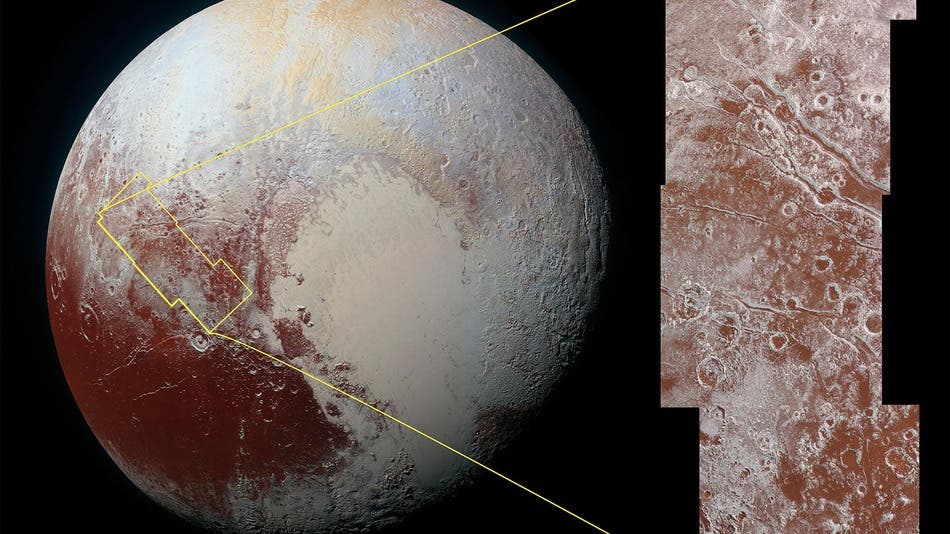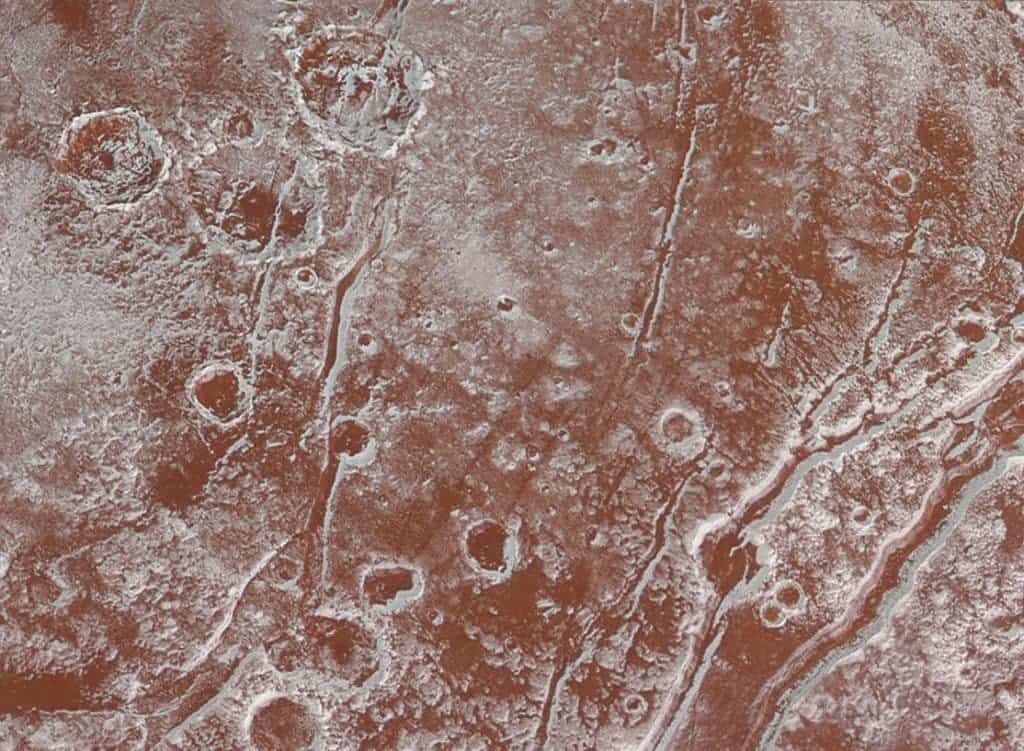
The New Horizons shuttle has finished its Pluto flyby months ago, but NASA is continuing to receive breathtaking photos from it. The latest additions paint a ‘lava lamp’ surface on Pluto’s surface, likely a sea of nitrogen close to Pluto’s Sputnik Planum.
Astronomers knew that Sputnik Planum was an icy plain, irregular and segmented by massive troughs, but now they get to see it in unprecedented detail, and so do we. The dark red spots are thought to be aggregations of tholin (molecules formed by solar ultraviolet irradiation of simple organic compounds such as methane or ethane), while the bright white rims are probably methane ice.


Thick thiolin deposits aren’t really mobile, but they seem to have drifted, which could indicate that they moved on the icy surface, perhaps aided by Pluto’s winds. Whatever the reality may be, it’s another indication that the tiny Pluto is a complex systems where many geological phenomena interact.
As for the Sputnik Planum, astronomers believe it could be a large impact basin that could harbor massive quantities of nirtogen ice.
“This part of Pluto is acting like a lava lamp, if you can imagine a lava lamp as wide as, and even deeper than, the Hudson Bay,” William McKinnon, New Horizons scientist said in a statement.
The first two images are actually composite images, combining data from two devices and times: New Horizons’ Long Range Reconnaissance Imager (LORRI), taken at a distance of around 31,000 miles (49,000 kilometers), and enhanced color data from the probe’s Ralph/Multispectral Visible Imaging Camera (taken 20 minutes later, when the spacecraft was at a range of around 21,000 miles).
If that still doesn’t convince you, how about this monumental picture of Pluto’s pits, likely caused by the sublimation of the nitrogen gas?







